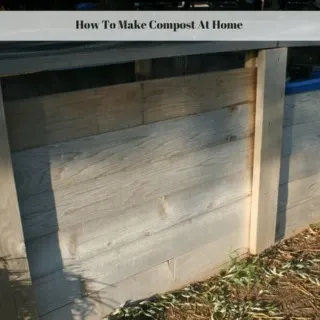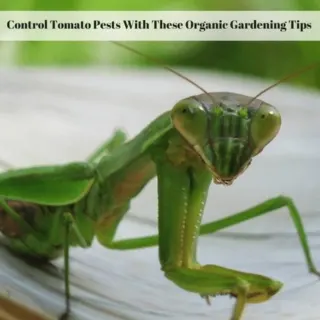Most gardeners, such as Jeff Lowenfels, a garden writer from Anchorage, Alaska, are generous people who enjoy sharing the bounty of their garden with others.
Lowenfels began the Plant a Row for the Hungry (PAR) program by asking gardeners to plant an extra row of beans in their garden for an Anchorage soup kitchen.
From there the idea spread and PAR, run by the Garden Writers Association now has thousands of volunteers.

Why You Should Plant A Row For The Hungry
Hunger is on the rise!
The numbers of hungry people increase every year, necessitating the need for more food at soup kitchens and food pantries.
Local food pantries and soup kitchens need fresh produce now more than ever before.
Research shows that hundreds of hungry people are turned away from local soup kitchens and food pantries each year because of a lack of resources.
This is where gardeners can make a difference by getting involved with the grassroots efforts of PAR.
As you begin to plan your vegetable garden this year, plant a few extra rows of vegetables or herbs to donate.
Contact the person in charge of the local food pantry or soup kitchen in your area and ask them what they have the greatest need for.
This will help you decide what to plant and in what amounts.
Also ask what the requirements for donating are as some need to know in advance if you plan to donate a large quantity of fresh produce.
Finding A Local Food Pantry Or Soup Kitchen Is Easy!
Locating the soup kitchens and food pantries in your area is simple.
Look in the yellow pages under social services.
Although the listing may not specify if they have a food pantry or soup kitchen, a few inquiring phone calls to the agencies listed can help you find out about the ones in your area.
Ask the person you speak to for the phone numbers of the facilities in your area.
Then call them, ask to speak to the person in charge and find out what is needed.

Get Others Involved In Your Plant A Row For The Hungry Efforts
Try to find a group of volunteers in your area such as the local Master Gardeners so you can create a local network of people who are willing to help grow, harvest or deliver the food that is grown.
If you have a local prison in your area, contact them to see if they are interested in participating.
I was able to get 16 prisons throughout Indiana to agree to grow a garden and donate the produce as long as I provided the seeds via mail.
Once you know who is on board, then it is time to plan your campaign.
A free PAR workbook and press kit is available to anyone beginning a campaign by simply calling the PAR headquarters at 1-877-492-2727 and requesting it.
Be ready to kick your campaign into gear at with the start of the planting season.

Don’t Forget The Media!
Publicity is important so get the local media involved.
There may be other gardeners’ in your area who find out about your campaign and want to get involved.
Ask local nurseries or garden centers if you can hand out pamphlets or simply put some on their counter for customers to pick up.
Later as the harvest season approaches, begin to organize gleaning opportunities on fields other than your own.
Many times produce is left in the fields, especially with crops like tomatoes or potatoes.
Keep in touch with local food pantries and soup kitchens to see how their stocks are tallying up and what their current needs are.

Wrap Your PAR Campaign Up With A Harvest Party!
Finally wrap up the season with a harvest party and again invite the media.
Thank everyone who has been involved, announce the amount of produce that was donated locally and announce plans for next year’s campaign.
The future is in our hands.
Let's make a difference now.
Let's teach others how to be self-sufficient and by doing so decrease the numbers of the hungry.
Planting Your Garden
How Much To Plant In Your Garden
This article will help you figure out how much to plant in your garden depending on your family's size and whether you want to preserve the food or not.
When to Plant in Spring: Early Season Garden Tips
Know when to plant in spring by using these early garden season tips. These tips will allow you to get a head start on your vegetable garden.
Benefits Of Container Gardening During Changeable Weather Conditions
Changeable weather conditions certainly impacts gardeners who wish to grow their plants in the ground, but there is a solution. Learn about the benefits of container gardening and how it can help gardeners deal with climate change!
How To Grow Tomatoes
Learn how to grow tomatoes and how to plant tomatoes in a garden. Growing great tomatoes is easy if you follow a few simple steps.
Mastering Sweet Potato Gardening: How to Plant Sweet Potato Plants
Unlock the secrets of successful gardening with our guide on how to plant sweet potato plants for a bountiful harvest!
Gardening Tips For Beginners
These gardening tips for beginners will help you get your first garden started right. Tips on gardening planning, caring for bareroot plants and more.
How To Garden In Winter Indoors And Outdoors
Learn how to garden in winter indoors and outdoors. There are many vegetables and herbs that don't mind the cold or thrive in containers.
How To Make Compost At Home
Learn how to make compost at home using materials you already have on hand and are likely to throw into the trash and send to the local landfill.
Control Tomato Pests With These Organic Gardening Tips
These organic gardening tips for controlling pests on tomato plants help you identify, control and get rid of the problem without the use of organic pesticides in most cases.
How To Combat Blossom End Rot
Wondering what to do about tomatoes with brown spots on the bottom of them? Learn how to combat blossom end rot, a common problem many gardeners encounter.
Save Money! Harvest Free Vegetables Year-Round In Any Climate!
Garden tips for beginners - and advanced gardeners alike - that are sure to help save money. These gardening tips are about more than just plant care!
Vegetable Growing Realities: More Than Economic Benefits
When it comes to the facts of vegetable growing realities, there are more reasons than just the economic benefits for doing it.
Outsmart Frost in Spring Vegetable Gardens
Understanding how to outsmart frost in spring vegetable gardens leads to earlier harvests, less plant damage and a longer growing season.
Greenhouse And Coldframe Garden Structure Ideas
Learn about tunnel houses, greenhouses and cold frame garden structures as well as how they are used to grow plants outdoors year round.
Vegetable Garden Tips And Ideas For Using Artificial Grass
If you're looking for vegetable garden tips and ideas that incorporate the use of artificial grass, look no further! Weed prevention, pest control and environmental benefits. If you're looking for vegetable garden tips and ideas that incorporate the use of artificial grass, look no further! Weed prevention, pest control and environmental benefits.
10 Easiest Vegetables to Grow from Seed
Learn about the 10 easiest vegetables to grow from seed. Not only are there some unique heirloom varieties, but they are tasty too!
Extend the Spring Vegetable Garden
Learn how to extend the spring vegetable garden into summer, fall or even winter by using various shading and covering techniques.
Survival Food Garden: Grow Vegetables For Disaster Preparedness
A survival food garden is a great thing to have even if you don't believe the zombie apocalypse is coming.
Peanuts Are Exotic Plants: Growing vegetables such as peanuts can make your garden unique
It is possible to learn how to grow peanuts even if you don't live in a warm climate. Peanuts are exotic plants that are fun to grow.
What Garden Seeds To Plant In June
There are a number of vegetable garden seeds to plant in June. Even if the soil is too wet to work, there are ways around that.
Eat Better, Save Money By Growing A Garden
Learn how you can eat better and save money by growing a garden right in your own backyard or even on your balcony!
Sheri Ann Richerson
Growing organically is important because the produce is healthier and contains more nutrients.
It is better for the environment, insects and birds, plus there is no concern about the potential issues with GMO’s.
It is also environmentally friendly and helps reduce your carbon footprint, not to mention saves money.
Plus there is the holistic perspective of growing an organic garden because from the soil to the food we eat, it is all interconnected.
In this course you will learn:
How to build healthy organic soil
When to plant seeds or established plants as well as when to direct sow
How to simplify garden maintenance
Natural methods of pest control


























